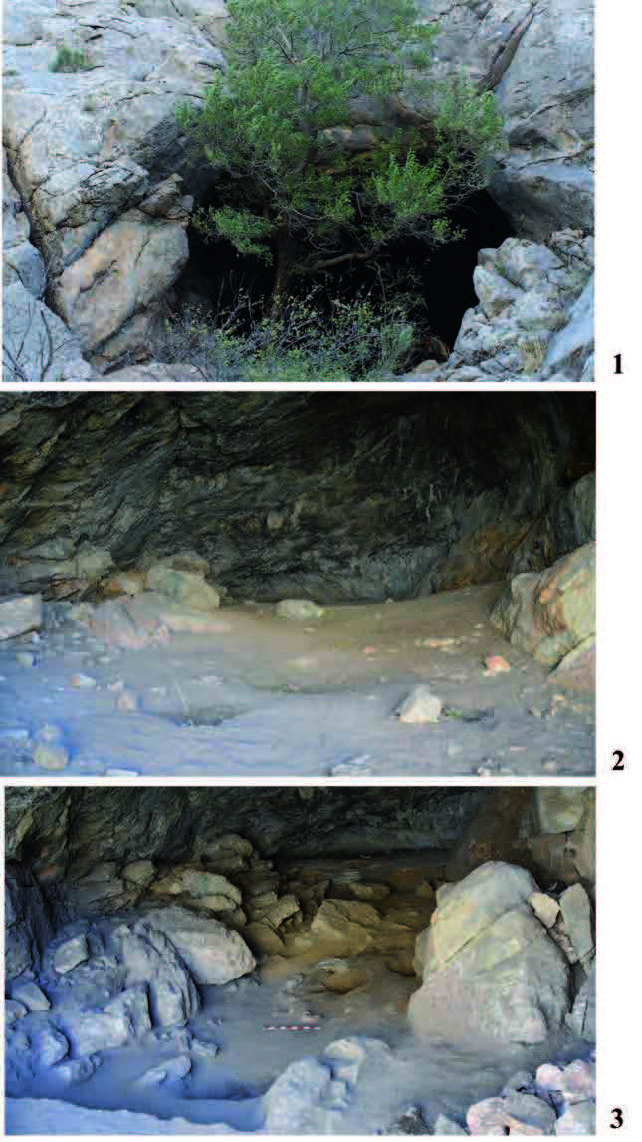2018 ЖЫЛҒЫ ТҰТТЫБҰЛАҚ-I ҮҢГІРІНДЕГІ АРХЕОЛОГИЯЛЫҚ ЗЕРТТЕ УЛЕР
DOI:
https://doi.org/10.52967/akz2018.1-2.1-2.272.287Keywords:
archaeology, Karatau, Boralday gorge, cave, standing, metallurgy, workshop, hearth pit, chimney, tools, coins, arrowheads, ceramics, Bronze Age, Early Iron Age, early Middle AgesAbstract
This article is devoted to results of researches in the cave of Tuttybulak-I in the field season of 2018. The excavation site was laid in the Northern and Western parts of the monument and deepened around the perimeter (90 m²) to a depth of 2.2 m in order to identify Ancient layers. The pits of metallurgical workshops of the early Middle Ages and Mongol-Timurian time were cleared. In the layers at depth of 40–85 cm deposits of medieval pottery, coins and tools and products of blacksmithing were found. At a depth of 100–120 cm fragments of ceramic dishes, arrowheads of the Bronze age and the Early Iron Age were recorded. Under the rock slab in the center of the cave fragments of the lower jaw and pelvic bones of the human skeleton were discovered. Dense loam with crushed stone and fragments of small stones, mica and limestone are the main filling of the space of the cave in control pit from depth of 120 to 200 cm. This fact gives reason to assume that we have investigated the cultural layers from the Bronze Age to the late Middle Ages. Is believed that the cave to have served as a temporary refuge for hunters and gatherers in the Bronze Age. In the Early Iron Age it began to be used for smelting iron and bloom. It was most actively used as a metal smelting workshop in the early middle ages and the Karakhanid’s period. It continued to be used periodically as a workshop throughout the late Middle Ages until the turn of the XVII–XVIII centuries.
References
Ageeva, E. I., Patcevich, G. I. 1958. In Trudy Instituta istorii, arkheologii I etnographiiAkademii Nauk KazSSR (Writing of Institute of history, archaeology and Ethnography of Academy of Sciences of KazSSR), 5, 147-157 (in Russian).
Akishev, K. A., Baipakov, K. M., Erzakovich, L. B. 1972. Drevnii Otrar (topographiya, stratigraphiya, prespectivy) (Ancient Otrar (topography, stratigraphy, prospects)). Alma-Ata: “Nauka” Publ. (in Russian).
kishev, K. A., Kushaev, G. A. 1963. Saki I usuni doliny reki Ili (Saka and Wusun tribes of Ili valley). Alma-Ata: “Nauka” Publ. (in Russian).
Baipakov, K. M., Savelieva, T. M., Chang, C. 2005. Srednevekovye goroda I poseleniya Severo-Vostochnogo Jetysu (Towns and settlements in Middle Ages in North-East Semirechie). Almaty: “Credo” Publ. (in Russian).
Baitanayev, B. A. 2011. Drevnosti Burguluka (Ancient times of Burguluk). Almaty: Institute of Archaeology after A.Kh. Margulan (in Russian).
Baitanayev, B. A., Goryachev, A. A., Saraev, V. V., Shayakhmetov, A. Kh., Ergeshbayev, A. A., Beisenov, N. B. 2017. Noviepamyatniki rannego zheleznogo veka Uzhnogo Kazakhstana (New monuments of the Early Iron Age in South Kazakhstan). Almaty: Institute of Archaeology after A.Kh. Margulan (in Russian).
Baitanaev, B. A., Goryachev, A. A., Saraev, V. V., Shayakhmetov, A. Kh. 2017. In Izvestiya NAN RK. (News of National Academy of Sciences of Pepublic of Kazakhstan. Series of social Sciences), 1 (311), 143-159 (in Russian).
Bernshtam, A. N. 1950. Trudy Semirechenskoi arheologicheskoi expedicii “Chuiskaya dolina” (The researches of archaeological expedition of Semirechie “The Chuy Valley”). MIA, 14. Moscow–Leningrad (in Russian).
Vishnevskaya, N. U. 2001. Remeslennye izdeliya Dzhigerbenta IV BC – XIII AC (Handicraft products of Dzhigerbent IV century BC – XIII century AC). Moscow: “Vostochnaya literature” Publ. (in Russian).
Goryachev, A. A., Egorova, T. A. 2015. In Beisenov, A. Z. (ed.) Sakskaya kultura v kontexte izucheniya ethnosociokulturnykh processov stepnoy Eurazii (Saka culture of Sary-Arka in the context of researches of ethno-social processes of Eurasian steppe). Almaty: “Begazy-Tasmola” Publ., 90-99 (in Russian).
Ivanov, S. S. 2017. In Izvestiya NAN RK (News of National Academy of Sciences of Pepublic of Kazakhstan. Series of social Sciences), 1 (311), 38-58 (in Russian).
Maryashev, A. N., Goryachev, A. A. 2017. In Electronic scientific journal “edu.ehistory. kz”, 3. URL: http://edu.e-history.kz/ru/publications/view/723 (in Russian).
Savelieva, T. V., Zinyakov, N. M., Voyakin, D. A. 1998. Kuznechnoe remeslo Severo-Vostochnogo Senirechiya (Blacksmith craft of North-Eastern Semirechie). Almaty: “Gylym” Publ. (in Russian).
Smagulov, E. A. 2011. Drevnii Sauran (Ancient Sauran). Almaty: “Abdi compani” (in Russian).
Urmanova, M. Kh. 1956. In Trudy Instituta istorii, arheologii i etnografii AN UzSSR (Writing of Institute of history, archaeology and ethnography of Academy of Sciences of UzSSR), VIII, 127-143 (in Russian).
Flerova, V. E. 2001. Reznaya kost’ yugo-vostoka Evropy IX–XII vekov: iskusstvo i remeslo (po materialam Sarkela – Beloj Vezhi iz kollekcii Gosudarstvennogo Ermitazha). (Carved bone of southeastern Europe in the 9th – 12th centuries: art and craft (based on Sarkel – Belaya Vezha materials from the State Hermitage Museum collection)). Saint Petersburg: «Aleteiya» Publ. (in Russian).
Shagalov, V. D., Kuznetcov, A. V. 2006. Katalog monet Chaha III–VIII vv. (Catalogue of coins of Chach III–VIII cc.). Tashkent: “FAN” Publ. (in Russian).

Downloads
Published
How to Cite
Issue
Section
License
Copyright (c) 2018 B.A. Baitanayev, A.A. Goryachev, T.A. Egorova, A.A. Ergeshbayev, A.B. Baitanayeva, E.B. Baitanayev

This work is licensed under a Creative Commons Attribution-NonCommercial 4.0 International License.






